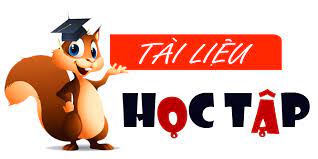Read the following passage, then decide whether the following statements are true (T), false (f), or no information (NI)
Đọc bài ko hiểu gì hết, ai giúp mình với
Read the following passage, then decide whether the following statements are true (T), false (f), or no information (NI).
The great English scientist Isaac Newton, whose theory of gravitation is well-known throughout the world, was born in the little village Woolthorpe, not far from his own town of Cambridge, on December 25th, 1642. His father was a farmer who died when Newton was fourteen years old. His mother, uncle and grandmother took care of him.
When still young, Newton was more of a mechanic than a scholar. His neighbors thought he would probably become a well-know clockmaker, because he had already made a clock his neighbours had never heard of before. It worked by water. Besides the water clock Newton also made a sundial. When he grew older, he became interested in mathematics and physics. His first physical experiment was carried out in 1658, when he was 16 years old. On June 5th, 1661 Newton entered the University of Cambridge where he studied mathematics and soon became famous at the age of 21.
When Newton was 22 years old, he began studying the theory of gravitation. In 1669 he was appointed professor and began giving lectures on mathematics at Cambridge. Isaac Newton died in 1727 at the age of 85.
1. Newton was not a physics, he was a mathematician.
2. He was born in the town of Cambridge.
3. When he was young he was very intelligent.
4. He wasn’t very interested in mathematics until he grew older.
5. His first physical experiment was carried out when he was not yet twenty
6. Newton’s Laws explained the relationships between force, mass and movement.
7. He entered the university of Cambridge at the age of 21.
8. He became a professor when he was not yet 30.
Các câu hỏi liên quan
Choose the best answer
Chọn 1 đáp án đúng
1.‘Was Tom there when you arrived?’ ‘Yes, but he…………home soon afterwards.’
| a. goes | b. went | c. had gone | d. were going |
2. Before Jennifer won the lottery, she……………any kind of contest.
| a. hasn’t entered | b. doesn’t enter | c. wasn’t entering | d. hadn’t entered |
3.‘Who was the woman in red dress? Did you know?’
‘No. I……………who she was. I……………her before.’
| a. didn’t know/ hadn’t seen | b. didn’t know/ hasn’t seen |
| c. hadn’t known/ hadn’t seen | d. don’t know/ hasn’t seen |
4. Did you say that you……………here only three days ago?
| a. were coming | b. had come | c. have come | d. come |
5. By the time he arrived at the party, all his classmates……………
| a. has left | b. left | c. was leaving | d. had left |
6. When I was a child……………the violin.
| a. I was playing | b. I had played | c. I play | d. I played |
7. It’s two years……………Joe.
| a. that I don’t see | b. that I haven’t seen |
| c. since I didn’t see | d. since I saw |
Điền những từ trong khung vào chỗ trống thích hợp
Complete the passage with correct form of the words from the box.
| force possible start emigrate write determine physic final educate establish |
Elizabeth Blackwell was born in England in 1821 and (1)………………..to New York City when she was ten years old. One day she decided that she wanted to become a doctor. That was nearly (2) ………………..for a woman in the middle of the nineteenth century. After (3) ………………..many letters seeking admission to medical schools, she was (4) ………………..accepted by a doctor in Philadelphia. So(5)………………..was she that she taught school and gave music lessons to earn money for her tuition.
In 1849, after graduation from medical school, she decided to further her (6) ………………..in Paris. She wanted to be a surgeon, but a serious eye infection (7)………………..her to abandon the idea.
Upon returning the United States, she found it difficult (8)……………….. her own practice because she was a woman. By 1857, Elizabeth and her sister, also a doctor, along with another female doctor, managed to open a new hospital, the first for women and children. Besides being the first female (9) ………………..in the United States and founding her own hospital, she also (10) ………………..the first medical school for women.
